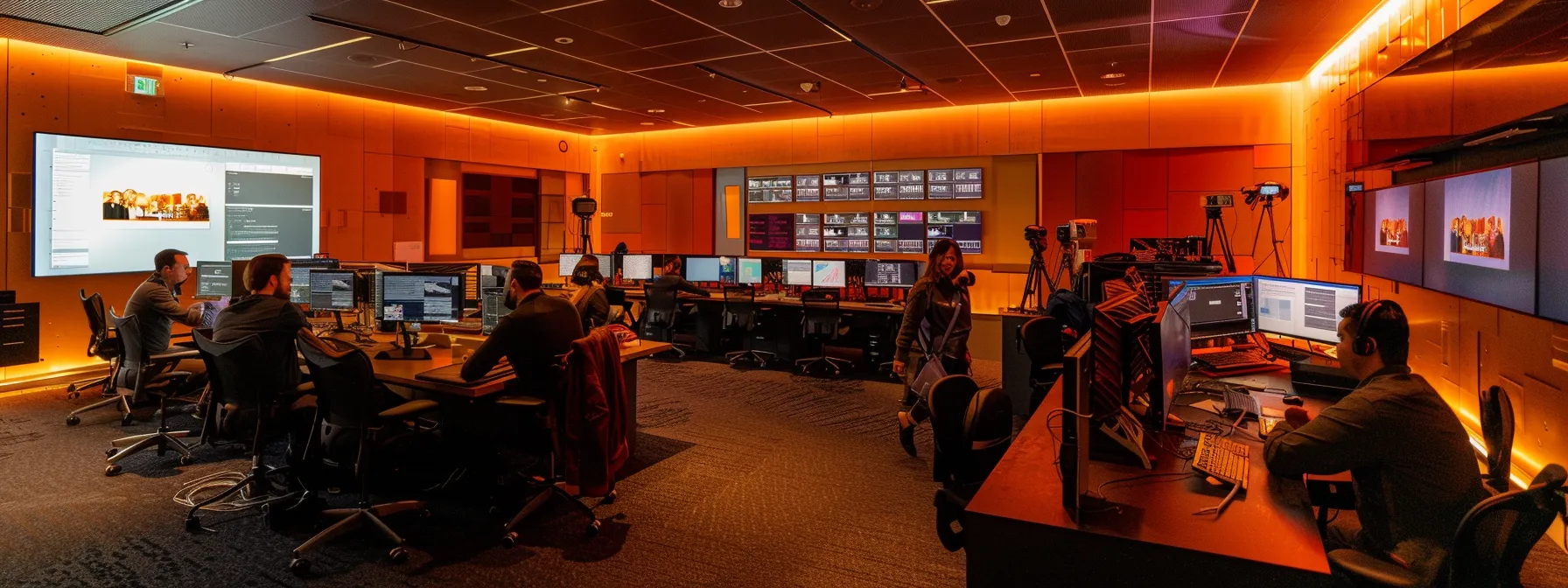Comprehensive Insights Into Talent Acquisition and Recruitment Strategies
Talent acquisition is often seen as a complex challenge for employers striving to find the right talent in today’s competitive landscape. This blog post will break down the essential components of a talent acquisition strategy, explore the talent acquisition process, and discuss how technology can enhance recruitment efforts. By understanding these elements, readers will learn how to improve employee retention and streamline strategic planning, ultimately addressing common issues faced in attracting and retaining qualified candidates. Engaging with this content will equip business leaders with practical insights to refine their approach to talent acquisition.
Key Takeaways
- Talent acquisition focuses on long-term planning and aligns talent with organizational goals
- A strong employer brand attracts top candidates and supports employee retention
- Integrating data analytics improves decision-making and optimizes recruitment strategies
- Utilizing applicant tracking systems streamlines processes and enhances candidate experiences
- Diversity, equity, and inclusion are essential for fostering innovative and engaged workplaces
What Is Talent Acquisition?

Talent acquisition involves the strategic approach to identifying, attracting, and acquiring skilled individuals to meet an organization’s needs. Understanding its significance is crucial as it differentiates from basic recruitment by focusing on long-term workforce planning, employer branding, and integrating mentorship. This section will discuss how automation streamlines the interview process and the pivotal role of talent acquisition within human resources.
Defining Talent Acquisition and Its Importance
Talent acquisition refers to the strategic process organizations use to identify and attract skilled professionals who can contribute significantly to their goals. Unlike traditional recruitment, which often focuses solely on filling vacancies, talent acquisition emphasizes long-term planning and talent sourcing, ensuring that an organization continuously nurtures a pipeline of candidates. This approach enhances an organization’s return on investment by aligning talent with its future needs, thus speeding up onboarding and training initiatives.
Moreover, effective talent acquisition integrates data-driven intelligence to enhance decision-making processes during hiring and negotiation phases. Organizations that prioritize this comprehensive strategy benefit by fostering strong employer branding, which can attract top talent in competitive markets. By embedding mentorship and career development programs into the talent acquisition framework, businesses not only fulfill current vacancies but also build a sustainable workforce capable of driving innovation and growth.
- Strategic identification of skilled professionals
- Focus on long-term workforce planning
- Enhanced return on investment through talent sourcing
- Integration of data-driven intelligence in hiring
- Importance of effective negotiation in talent acquisition
- Fostering employer branding to attract top talent
Differentiating Talent Acquisition and Recruitment
Talent acquisition and recruitment, while related, serve distinct functions within an organization. Recruitment focuses on filling immediate vacancies, addressing the current economy’s demand for labor, while talent acquisition takes a sustainable, strategic approach aimed at future workforce needs. This longer-term view allows businesses to enhance their reputation, ensuring they attract skilled individuals who will significantly contribute to productivity and overall success.
Effective talent acquisition often employs advanced technologies, such as chatbots, to streamline processes and improve candidate experience. By integrating these tools, organizations can optimize payroll management and lower recruitment costs, ultimately leading to enhanced operational efficiency. As a result, companies can build a robust talent pipeline that supports ongoing growth and innovation within their respective industries.
- Focus on immediate vacancies vs. long-term workforce strategy
- Influence of the economy on recruitment needs
- Enhancing company reputation through strategic hiring
- Utilizing chatbots to streamline recruiting processes
- Improving productivity with a solid talent pipeline
Understanding the Role of Talent Acquisition in HR
Talent acquisition plays a vital role in human resources by aligning workforce capabilities with organizational goals. Chief executive officers recognize that a strategic approach to recruiting not only fills immediate skill gaps but also fosters long-term growth and sustainability. By incorporating data-driven insights, HR professionals can better understand the evolving demands of their industries and improve the overall accessibility of their recruiting processes.
Moreover, the role of talent acquisition extends beyond mere hiring; it involves building a robust employer brand that attracts top candidates. Effective talent acquisition strategies focus on creating a seamless experience for prospective employees, which includes clear communication and streamlined processes. This ensures that organizations can secure the skills they need while fostering an environment where employees feel valued and motivated to contribute to the company’s success.
Key Components of a Successful Talent Acquisition Strategy

Identifying organizational needs and goals is essential for crafting an effective talent acquisition strategy. It requires the development of clear and engaging job descriptions that attract the right candidates. Utilizing veteran sourcing techniques is key in identifying top talent. Strategies for candidate engagement and communication enhance relationships, while best practices for evaluating candidate fit ensure alignment with company leadership and objectives, supported by analytics and forecasting tools from industry leaders like IBM.
Identifying Organizational Needs and Goals
Identifying organizational needs and goals is critical for any talent manager aiming to create a robust talent acquisition strategy. This process involves thoroughly analyzing both the current workforce and future requirements, especially in an era where remote work is becoming increasingly popular. By understanding the specific skills and characteristics that candidates should possess, organizations can attract the right talent that aligns with their brand and overall objectives.
A successful talent acquisition strategy should incorporate proactive approaches to forecasting talent needs, enabling organizations to act swiftly when vacancies arise. For instance, leveraging data analytics can provide insights into industry trends, helping talent managers refine their search for candidates who not only meet immediate needs but also align with long-term strategic goals. This alignment fosters a strong employer brand, appealing to top talent and encouraging a talented workforce that supports future growth:
- Analyze current workforce capabilities
- Assess future skills and characteristics needed
- Utilize data analytics for trend insights
- Refine candidate search for alignment
- Foster a strong employer brand
Developing Clear and Engaging Job Descriptions
Developing clear and engaging job descriptions is essential for effective talent acquisition. These descriptions should not only outline the responsibilities and qualifications of the role but also reflect the organization’s culture, attracting candidates who align with the workplace environment. Utilizing talent acquisition software can streamline this process, ensuring that descriptions are comprehensive and compliant with regulations such as the Fair Credit Reporting Act, which is vital for maintaining transparency in hiring practices.
Hiring managers play a crucial role in crafting these descriptions. They can provide insights into specific skills and experiences that are necessary for success in the position. By effectively leveraging applicant tracking systems, organizations can create job postings that resonate with potential candidates, thus improving the overall applicant experience and increasing the likelihood of attracting top talent who are eager to contribute to the organization’s goals.
Veteran Sourcing Techniques to Identify Talent
Veteran sourcing techniques play a critical role in identifying top talent while minimizing hiring risks. By leveraging established networks and engaging with industry-specific communities, hiring managers can access a pool of candidates who not only possess the required skills but also align with the organization’s values. This targeted approach enhances evaluation processes, allowing for better-informed decisions during the recruitment cycle.
Additionally, integrating marketing strategies within the talent acquisition framework can further amplify the effectiveness of veteran sourcing. By crafting compelling narratives around the organization’s mission and workplace culture, hiring managers can attract candidates who resonate with these elements. Continuous learning and adaptation in sourcing methods ensure organizations remain competitive in discovering exceptional talent while effectively addressing potential shortcomings in their current recruitment strategies:
- Utilize established networks for talent discovery
- Engage with industry-specific communities
- Enhance evaluation processes for informed decision-making
- Incorporate marketing strategies to attract aligned candidates
- Focus on continuous learning to refine sourcing methods
Strategies for Candidate Engagement and Communication
Effective strategies for candidate engagement and communication are essential in the talent acquisition process. Organizations can enhance their outreach by providing clear information on compensation and benefits during initial interactions. By openly discussing salary expectations and training opportunities, businesses demonstrate transparency and foster trust, which is critical for attracting top talent. Additionally, ongoing communication throughout the hiring process keeps candidates informed and engaged, minimizing the risk of losing them to competing offers.
Utilizing innovative platforms for communication can further streamline candidate engagement. For instance, implementing chatbots or personalized email campaigns allows for timely responses to inquiries, addressing potential concerns regarding the role, training programs, and overall company culture. This proactive approach not only improves the candidate experience but also reflects an organization’s commitment to maintaining a strong employer brand, ultimately leading to a more effective talent acquisition strategy that aligns with the company’s goals.
Best Practices for Evaluating Candidate Fit
Evaluating candidate fit requires a strategic approach that incorporates clear criteria aligned with the organization’s goals. By focusing on essential attributes such as cultural compatibility and potential for growth, hiring managers can ensure that candidates not only meet current requirements but also benefit from ongoing training and development opportunities. This alignment ultimately leads to better employment outcomes and higher retention rates.
Utilizing structured assessment methods can enhance the evaluation process. Implementing tools like behavioral interviews and skill assessments helps gather comprehensive information about a candidate’s abilities and values. Additionally, outsourcing parts of the evaluation process can provide unbiased insights into candidate performance, enabling organizations to make informed hiring decisions that support effective talent acquisition strategies:
- Focus on cultural compatibility
- Include training and development opportunities
- Utilize structured assessment methods
- Implement behavioral interviews and skill assessments
- Outsource evaluation processes for unbiased insights
The Talent Acquisition Process Explained

The talent acquisition process encompasses several critical steps that ensure effective hiring and long-term organizational success. This section will outline strategies for aligning with hiring managers to create precise job descriptions, explore techniques for sourcing and attracting candidates within the community, and highlight the importance of evaluating candidates through structured interviews. Additionally, it will address managing job offers and negotiations, along with the onboarding experience and its significant impact on retention.
Steps for Aligning With Hiring Managers
Aligning with hiring managers is critical for shaping successful talent acquisition strategies. In this process, it is essential to engage in thorough discussions to clarify the specific requirements for roles, including essential skills and cultural fit. Using collaborative tools and software can streamline this communication, ensuring that hiring managers and talent acquisition professionals are on the same page regarding the attributes of top talent.
Once alignment is established, creating an accurate and engaging job description becomes possible. Utilizing a centralized database for candidate tracking allows hiring teams to easily reference past applicants and maintain a comprehensive view of prospects’ qualifications. This approach not only improves efficiency but also enhances the chances of attracting top talent who are well-suited for the organization’s needs:
Techniques for Sourcing and Attracting Candidates
Implementing a successful strategy for sourcing and attracting candidates requires a clear understanding of the organization’s culture and goals. Organizations can leverage artificial intelligence tools to analyze existing employee data and identify patterns that correlate with strong cultural fit. This approach enables talent acquisition teams to refine their search for candidates who not only possess the required skills but also align harmoniously with the company’s values, enhancing overall workplace cohesion.
Diversity is a fundamental aspect of modern talent acquisition strategies. By actively promoting inclusive job postings and outreach efforts, organizations can attract a broader range of candidates with unique perspectives. Utilizing targeted marketing techniques and community engagement initiatives helps to expand the talent pool, ensuring that the organization can effectively meet its goals while fostering a rich and diverse workplace culture.
Evaluating Candidates Effectively Through Structured Interviews
Evaluating candidates effectively through structured interviews is essential for aligning hiring decisions with an organization’s employee value proposition. By utilizing a consistent set of criteria, hiring managers can assess each applicant’s suitability, based on their résumé, skills, and experiences that relate directly to the job requirements. This approach not only improves the quality of hires but also minimizes potential mismatches that can occur when hiring for temporary work or staffing solutions.
Moreover, structured interviews enhance the ability to make objective decisions, which supports fair evaluation processes. By implementing behavioral questions related to past performance and future potential, hiring teams can gauge how well a candidate will adhere to the company’s values and culture. This method becomes especially valuable when negotiating employment contracts, as it provides clear insights into each candidate’s strengths and areas for development:
Managing Job Offers and Negotiations
Managing job offers and negotiations is a critical phase in the talent recruitment process that requires strategic planning and effective communication. Organizations equipped with an applicant tracking system can streamline this stage by tracking candidate preferences and seamlessly managing dialogue regarding compensation and benefits. This tailored approach not only ensures clarity in negotiations but also enhances the candidate experience, ultimately increasing the likelihood of successful hires.
Effective negotiation relies on a solid understanding of the candidate’s knowledge and experience, as well as the organization’s value proposition. By incorporating data-driven insights and market research, hiring managers can formulate competitive offers that resonate with candidates. This creates a mutually beneficial outcome, where candidates feel valued and organizations secure top talent to drive their goals forward.
The Onboarding Experience and Its Impact
The onboarding experience plays a pivotal role in shaping an organization’s success and significantly impacts employee turnover rates. A well-structured onboarding process helps new hires acclimate to their roles, fostering a sense of belonging within the talent pool. Organizations that prioritize effective onboarding practices reduce bias and misalignment by ensuring that new employees understand their responsibilities, workplace culture, and expectations from day one.
Moreover, integrating a thorough job analysis during the onboarding phase can clarify job responsibilities, enhancing overall performance. Regular communication, such as newsletters that keep new employees informed about company updates and initiatives, strengthens engagement. Ultimately, effectively managing the onboarding experience contributes to a more satisfied workforce, directly influencing retention and productivity.
- The onboarding experience shapes employee success and turnover.
- A structured process fosters belonging within the talent pool.
- Job analysis clarifies responsibilities for new hires.
- Regular communication through newsletters enhances engagement.
- Effective onboarding improves retention and productivity.
Leveraging Technology in Talent Acquisition

This section explores the pivotal role of technology in enhancing talent acquisition strategies. It begins with an overview of talent acquisition software and emphasizes the effective use of applicant tracking systems for streamlined processes. Furthermore, it discusses how AI and automation can bolster recruitment efforts, followed by insights into analyzing data to optimize outcomes and strengthen the organization’s value proposition for workforce development.
Overview of Talent Acquisition Software
Talent acquisition software serves as a crucial tool for organizations seeking to streamline their hiring workflow. These platforms enable businesses to manage the recruitment process efficiently, from crafting job descriptions to tracking applicants’ progress. By integrating feedback mechanisms, teams can gain insights into their hiring practices, allowing for continuous improvement and alignment with organizational goals.
Many talent acquisition solutions also leverage data analytics to assess the effectiveness of various sourcing strategies. This capability empowers hiring managers to identify trends and optimize workflows, ensuring that resources are allocated effectively. Ultimately, adopting talent acquisition software not only enhances the efficiency of recruitment efforts but also strengthens an organization’s ability to attract and retain top talent in a competitive landscape.
Utilizing Applicant Tracking Systems Effectively
Utilizing applicant tracking systems (ATS) effectively can significantly streamline the recruitment process. Organizations benefit from these systems by automating the collection and sorting of resumes, ensuring that hiring managers quickly access qualified candidates. By implementing an ATS, businesses can optimize their hiring workflows, reducing time-to-hire and enhancing the overall candidate experience.
To maximize the potential of an ATS, recruitment teams should configure the system to align with their specific hiring criteria and organizational goals. This customization allows for targeted searches that match job requirements with candidate qualifications, thereby improving the quality of potential hires. Additionally, leveraging the analytics capabilities of an ATS can provide insights into recruitment bottlenecks and successful sourcing strategies, enabling organizations to refine their talent acquisition practices continuously:
- Streamline resume collection and sorting
- Automate communication with candidates
- Customize ATS configurations for precise hiring needs
- Analyze recruitment data for improvements
- Enhance the candidate experience throughout the process
The Role of AI and Automation in Recruitment
The integration of AI and automation in recruitment processes revolutionizes how organizations identify and engage with talent. By utilizing machine learning algorithms, companies can analyze large pools of candidates efficiently, filtering applications based on specific qualifications and experiences that align with job requirements. This automated screening not only reduces the time spent on manual reviews but also enhances the quality of selected candidates, addressing a common pain point in traditional recruitment methods.
Furthermore, AI-driven tools facilitate improved candidate engagement throughout the hiring process. Automation allows for timely communication, updates, and personalized outreach, ensuring candidates remain informed and engaged. This proactive approach helps organizations build a positive employer brand, as candidates appreciate transparency and efficiency, ultimately leading to higher acceptance rates of job offers and increased retention of top talent.
Analyzing Data to Improve Acquisition Outcomes
In talent acquisition, analyzing data plays a critical role in refining recruitment outcomes. By leveraging analytics, organizations can identify trends in candidate sourcing, track time-to-fill metrics, and assess the effectiveness of various hiring channels. For instance, a company utilizing analytics may discover that referrals lead to the highest retention rates and successfully focus their efforts on enhancing employee referral programs as a strategic recruitment channel.
Furthermore, data analysis allows organizations to evaluate candidate engagement and satisfaction throughout the hiring process. By gathering feedback at different stages, businesses can pinpoint areas for improvement, such as communication methods or interview formats. This targeted approach helps enhance the overall candidate experience, resulting in higher acceptance rates of job offers and establishing a stronger employer brand in competitive markets.
Current Trends in Talent Acquisition

The current landscape of talent acquisition reveals key trends shaping the recruitment process. Employer branding has become increasingly significant as organizations seek to attract top talent. In addition, diversity, equity, and inclusion strategies are essential for fostering a diverse workforce. Skills-based hiring offers numerous benefits, ensuring candidates are aligned with specific job requirements. Moreover, the influence of remote work is prompting businesses to adapt their talent acquisition approaches to meet evolving demands.
The Rise of Employer Branding and Its Significance
The rise of employer branding has become a crucial factor in talent acquisition, significantly influencing how organizations attract skilled professionals. Companies that actively cultivate a positive employer brand are better positioned to attract top talent, as prospective candidates often seek workplaces that align with their values and career aspirations. This strategic focus not only enhances recruitment efforts but also strengthens employee engagement and retention, fostering a loyal workforce dedicated to achieving organizational goals.
Moreover, a strong employer brand serves as a differentiator in a competitive landscape, where potential hires frequently evaluate multiple opportunities. Organizations can leverage platforms like social media to showcase their culture, values, and success stories, appealing directly to the motivations of candidates. By prioritizing employer branding, companies can address the needs and preferences of today’s job seekers, ultimately enhancing their talent acquisition strategies and supporting long-term business success.
Diversity, Equity, and Inclusion Strategies
Diversity, equity, and inclusion (DEI) strategies are now fundamental components of effective talent acquisition practices. Organizations that prioritize DEI create enriching working environments that attract a wide array of candidates, ensuring a more innovative and engaged workforce. By implementing structured DEI initiatives, companies not only enhance their employer branding but also cultivate a culture where all employees feel valued and empowered to contribute their unique perspectives.
To successfully integrate DEI into recruitment procedures, organizations should focus on removing biases from job descriptions and interview processes. This includes the use of inclusive language and diverse interview panels to evaluate candidates fairly. Companies can further strengthen their commitment to diversity by partnering with community organizations and educational institutions, which helps to build strong connections and expand their talent pool:
- Prioritize diversity in all hiring practices
- Utilize inclusive language in job descriptions
- Form diverse interview panels
- Collaborate with community organizations
- Enhance employer branding through DEI initiatives
Skills-Based Hiring and Its Benefits
Skills-based hiring has emerged as a pivotal approach in talent acquisition, where organizations focus on candidates’ specific abilities rather than traditional metrics such as degrees or years of experience. This method allows employers to identify individuals who possess the necessary competencies to excel in their roles, effectively bridging the skills gap that many industries currently face. By implementing skills-based hiring practices, companies can enhance workforce quality and drive performance, better aligning talent acquisition strategies with their overall business objectives.
One of the primary benefits of skills-based hiring is the potential for a more diverse candidate pool. This approach encourages organizations to consider applicants from non-traditional backgrounds, opening doors for those who may have the relevant skills but lack conventional qualifications. As businesses increasingly recognize the value of diverse perspectives, adopting skills-based hiring practices not only fosters innovation but also supports efforts to create inclusive work environments that reflect a company’s commitment to diversity, equity, and inclusion in recruitment strategies.
Remote Work Influencing Talent Acquisition Approaches
The shift toward remote work has fundamentally changed how organizations approach talent acquisition. Businesses are now compelled to adopt flexible hiring practices that can attract talent across geographic boundaries, broadening the talent pool significantly. By embracing remote opportunities, companies can identify skilled professionals who may not be available for on-site roles, thus ensuring that they meet the evolving demands of their operational needs.
Measuring Success in Talent Acquisition

Key performance indicators (KPIs) play a vital role in assessing the effectiveness of talent acquisition strategies. By analyzing candidate experience metrics, organizations can gain insights into their hiring processes and client perceptions. Adjusting strategies based on data insights ensures continuous improvement in recruitment techniques, ultimately leading to more successful hires and optimal alignment with organizational goals.
Key Performance Indicators for Talent Acquisition
Key performance indicators (KPIs) are essential in evaluating the effectiveness of talent acquisition processes. Metrics such as time-to-fill, cost-per-hire, and candidate satisfaction directly inform organizations about the efficiency and impact of their recruitment strategies. By closely monitoring these KPIs, businesses can identify areas for improvement and make data-driven decisions to enhance their hiring practices, ensuring they attract and retain high-quality talent.
Moreover, analyzing the quality of hire is a critical KPI that assesses the long-term success of recruitment efforts. This metric includes evaluating employee performance, retention rates, and employee engagement after onboarding. A focus on these indicators provides valuable insights into the alignment between talent acquisition strategies and organizational goals, allowing companies to continuously refine their approaches to attract and maintain a skilled workforce that contributes meaningfully to business objectives.
Analyzing Candidate Experience Metrics
Analyzing candidate experience metrics is essential for organizations seeking to enhance their recruitment strategies. By monitoring key indicators such as application completion rates and feedback on the interview process, companies can identify pain points within their hiring workflow. This data not only helps refine the candidate journey but also underscores the importance of a positive experience in attracting and retaining top talent.
Furthermore, leveraging insights gathered from candidate experience surveys can guide organizations in making informed adjustments to their talent acquisition practices. For instance, gathering feedback on communication clarity and accessibility can highlight areas for improvement, ensuring that applicants feel valued throughout the process. By prioritizing the candidate experience, organizations can strengthen their employer brand and improve recruitment outcomes, ultimately aligning with their long-term workforce goals.
Adjusting Strategies Based on Data Insights
Adjusting strategies based on data insights is essential for organizations striving to enhance their talent acquisition methods. By analyzing key performance indicators such as time-to-fill and candidate satisfaction, companies can identify inefficiencies in their recruitment processes. For instance, if analysis reveals a prolonged time-to-fill for specific positions, hiring teams may need to reevaluate their sourcing strategies or improve their candidate engagement techniques to attract talent more effectively.
Furthermore, leveraging candidate experience feedback allows organizations to refine their hiring practices continuously. Companies that actively solicit and analyze input from applicants can pinpoint areas of frustration or confusion within the application process. Armed with this data, hiring managers can implement targeted adjustments, such as clarifying communication or streamlining interview formats, thus enhancing the overall candidate experience and fostering a stronger employer brand.
Continuous Improvement in Recruitment Techniques
Continuous improvement in recruitment techniques is essential for organizations aiming to refine their talent acquisition strategies. By regularly analyzing recruitment outcomes and candidate feedback, companies can identify inefficiencies and areas that require enhancement. For instance, if the candidate experience reveals dissatisfaction with communication timelines, hiring teams can implement automated follow-ups to keep applicants informed, thus improving engagement and overall satisfaction.
Additionally, organizations can adopt data analytics tools to assess the effectiveness of different sourcing channels and interview methods. This allows talent acquisition professionals to make informed adjustments, such as shifting focus to platforms that yield higher quality candidates. Ultimately, embracing a culture of continuous improvement not only aids in optimizing recruitment processes but also strengthens the overall employer brand, making firms more appealing to top talent.
Building a Talent Acquisition Team

Building an effective talent acquisition team involves clearly defined roles and responsibilities that streamline the hiring process. Professionals in this field must possess a diverse skill set tailored to their functions, with numerous career advancement opportunities available. Fostering a collaborative team environment enhances performance and stakeholder engagement, ultimately contributing to successful recruiting outcomes.
Roles and Responsibilities in Talent Acquisition
In the realm of talent acquisition, clearly defined roles and responsibilities are essential for enhancing the efficiency and effectiveness of recruiting processes. Talent acquisition specialists are tasked with sourcing candidates, managing relationships with potential hires, and ensuring alignment between candidates’ skills and organizational needs. Their expertise in utilizing various sourcing strategies, including social media and networking events, enables organizations to build a diverse talent pool that supports future growth.
Moreover, hiring managers play a pivotal role by communicating specific job requirements and organizational culture to the talent acquisition team. Their collaboration ensures that job descriptions accurately reflect the skills needed for success in the organization. By working closely together, these professionals can create a seamless hiring process that not only attracts top talent but also fosters a positive candidate experience, addressing common pain points faced during recruitment.
Skills Required for Talent Acquisition Professionals
Talent acquisition professionals must possess strong communication skills to effectively engage with candidates and hiring managers. This ability enables them to convey the organization’s mission and culture clearly, ensuring that potential hires understand the expectations and values of the workplace. By fostering transparent conversations, these professionals can build trust with candidates, which is pivotal in attracting top talent and achieving successful hires.
Additionally, proficiency in data analysis is increasingly important in the talent acquisition landscape. Professionals who can interpret recruitment metrics are better equipped to make informed decisions about sourcing strategies and candidate engagement efforts. This analytical approach facilitates continuous improvement in hiring processes, allowing organizations to optimize their recruitment strategies and ultimately align their talent acquisition efforts with business objectives.
Career Path Opportunities in Talent Acquisition
Career path opportunities in talent acquisition encompass various roles that cater to different aspects of the recruitment process. Positions range from talent acquisition specialists, who focus on sourcing candidates, to talent acquisition managers, responsible for overseeing the entire hiring strategy and team performance. Organizations benefit from hiring professionals with diverse skill sets, enabling them to build a strong talent pipeline that meets the evolving needs of the business.
Individuals pursuing careers in this field may also look toward roles such as recruitment analysts, who leverage data to enhance hiring strategies, or employer branding specialists, who develop initiatives to attract top talent. By engaging in continuous professional development and gaining insights into industry trends, talent acquisition professionals can advance their careers and contribute significantly to their organizations’ success in a competitive recruiting landscape.
Fostering a Collaborative Team Environment
Fostering a collaborative team environment within a talent acquisition team is instrumental for effective recruitment strategies. By encouraging open communication and frequent collaboration among team members, organizations can enhance the quality of candidate assessments and streamline the hiring process. For instance, regular meetings to share insights on sourcing tactics or align on job requirements can greatly improve alignment between hiring managers and talent acquisition specialists, ensuring that all parties are working towards the same objectives.
Moreover, building a culture of collaboration allows team members to leverage their diverse skill sets and experiences to enhance overall recruitment outcomes. When professionals feel supported in sharing their ideas and best practices, they are more likely to innovate and develop new strategies to attract top talent. This synergy not only boosts team morale but also leads to more successful hires that align closely with the organization’s goals and values, ultimately fostering a more satisfied and productive workforce.
Frequently Asked Questions About Talent Acquisition

This section addresses common misconceptions about talent acquisition, offering clarity on its true purpose and scope. Additionally, it outlines how individuals can embark on a career in this field and highlights the best tools that enhance recruitment efforts. Finally, the discussion will focus on strategies for addressing the challenges faced in talent acquisition, providing practical insights to improve effectiveness.
Common Misconceptions About Talent Acquisition
One common misconception about talent acquisition is that it is merely a replacement for traditional recruitment. Many individuals conflate these two concepts, believing that talent acquisition only focuses on hiring for immediate needs. In reality, talent acquisition encompasses a broader strategy involving long-term workforce planning, talent nurturing, and employer branding that ensures organizations continuously attract qualified candidates for future roles.
Another prevalent misunderstanding is that talent acquisition professionals solely handle the hiring process. Although a significant aspect of their role involves recruitment, they also focus on strengthening the employer brand and implementing strategies that foster a positive candidate experience. By doing so, they contribute to building a sustainable workforce capable of driving organizational success over time. Understanding these distinctions helps businesses appreciate the comprehensive nature of talent acquisition:
- Talent acquisition involves long-term workforce planning.
- It enhances employer branding to attract future candidates.
- Professionals focus on candidate experience and organizational culture.
- A broader strategy ensures the alignment of talent with business goals.
How Do I Start a Career in Talent Acquisition?
Starting a career in talent acquisition often begins with gaining relevant educational qualifications, such as a degree in human resources or business administration. This foundational knowledge equips individuals with essential skills in recruitment, employee relations, and organizational behavior. Additionally, hands-on experience through internships or entry-level positions in HR departments can provide practical insights into the recruitment process, enhancing one’s expertise in sourcing and selecting candidates.
Networking plays a critical role in establishing a career in talent acquisition. Engaging with industry professionals through social media platforms, such as LinkedIn, and attending relevant workshops or conferences can open doors to new opportunities. Furthermore, obtaining certifications in recruitment or HR can enhance a candidate’s marketability, demonstrating their commitment to professional growth and a deep understanding of industry best practices.
What Are the Best Tools for Talent Acquisition?
Organizations looking to enhance their talent acquisition strategies benefit greatly from using specialized tools designed to streamline the recruiting process. Applicant tracking systems (ATS) rank among the most effective tools, as they automate tasks such as resume sorting, scheduling interviews, and managing candidate communications. By employing these tools, companies can not only shorten their time-to-hire but also improve the overall candidate experience, making the recruitment process more efficient for both hiring teams and applicants.
Moreover, integrating AI-driven recruitment platforms can significantly elevate the effectiveness of talent acquisition efforts. These tools leverage advanced algorithms to analyze candidate data, predict fit, and enhance engagement through tailored communication strategies. By utilizing an array of such recruitment tools, organizations can create a robust framework that maximizes resource allocation and fosters a positive employer brand, while navigating the competitive landscape of talent acquisition:
How to Address Challenges in Talent Acquisition?
Addressing challenges in talent acquisition requires a strategic focus on improving communication and streamlining processes. Organizations can implement tools such as applicant tracking systems (ATS) to manage candidate information effectively, allowing hiring teams to minimize bottlenecks and enhance candidate interactions. These systems provide valuable data insights that help identify challenges early, enabling timely adjustments to recruitment strategies.
Furthermore, fostering a culture of collaboration among hiring managers and talent acquisition specialists is crucial. Regular meetings and feedback sessions can help align expectations and clarify role requirements, ensuring that the hiring process remains efficient and focused. By prioritizing these best practices, organizations can effectively tackle common recruitment issues, such as lengthy hiring timelines and mismatched candidate profiles:
Frequently Asked Questions
What are the main differences between talent acquisition and recruitment?
Talent acquisition focuses on long-term workforce planning and building a strong employer brand, ensuring a strategic alignment with business goals. This process involves analyzing future hiring needs, developing talent pipelines, and fostering relationships with potential candidates.
In contrast, recruitment is a more immediate, tactical approach aimed at filling specific job openings. This process typically includes sourcing candidates, conducting interviews, and managing the hiring process, often with a focus on short-term staffing needs rather than comprehensive workforce planning.
How can technology improve the talent acquisition process?
Technology optimizes the talent acquisition process by streamlining recruitment workflows. Advanced tools such as applicant tracking systems (ATS) help in organizing candidate information, automating repetitive tasks, and enhancing communication, thereby improving efficiency and overall candidate experience.
Data analytics plays a crucial role in refining hiring strategies. By analyzing workforce data, organizations can identify talent trends, forecast hiring needs, and measure recruitment effectiveness. This data-driven approach facilitates informed decision-making, ultimately attracting top candidates more effectively.
What key metrics should be used to measure talent acquisition success?
Measuring talent acquisition success requires key metrics that provide insight into the hiring process. Important indicators include time to hire, quality of hire, and candidate satisfaction. These metrics help organizations assess efficiency and the effectiveness of their recruiting strategies.
Additional metrics such as cost per hire and offer acceptance rate also play a crucial role. Tracking these figures enables businesses to optimize their talent acquisition efforts, ensuring they attract and retain top talent while managing recruitment expenses effectively.
What are the essential skills needed for a talent acquisition team?
Talent acquisition teams require strong communication skills to engage with candidates and stakeholders effectively. They must also possess excellent analytical abilities to evaluate candidate profiles, understand market trends, and adapt strategies accordingly, ensuring alignment with organizational goals.
Additionally, deep knowledge of recruitment technologies is essential for efficiently sourcing and managing candidates. Team members should demonstrate strong relationship-building skills, allowing them to forge connections with potential hires and foster a positive employer brand.
How do current trends influence talent acquisition strategies today?
Current trends heavily shape talent acquisition strategies by prioritizing diversity, equity, and inclusion (DEI), as organizations recognize diverse teams drive innovation. Employers now utilize data analytics tools to refine candidate searches, enhancing overall effectiveness and ensuring alignment with company culture and values.
Furthermore, remote work preferences have transformed recruitment approaches. Companies adopt flexible hiring practices, appealing to a broader talent pool. Leveraging social media platforms for outreach and utilizing artificial intelligence in screening processes streamline candidate engagement and improve hiring outcomes in today’s competitive landscape.
Conclusion
Comprehensive insights into talent acquisition and recruitment strategies highlight the necessity of a strategic approach to building a skilled workforce. By prioritizing employer branding, diversity, and data-driven decision-making, organizations can attract and retain top talent effectively. Understanding the distinct roles of talent acquisition compared to traditional recruitment empowers businesses to focus on long-term success rather than merely filling immediate vacancies. Ultimately, implementing these strategies fosters an engaged and capable team that drives innovation and growth within the organization.











